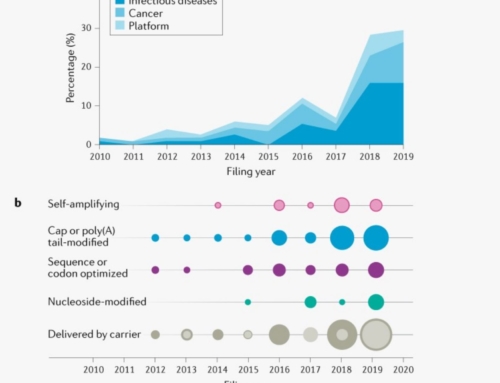By Bruce Rubinger and Brendan Sever
November 30, 2020
(updated January 12, 2021)
Introduction
Inter-partes reviews (IPRs) have transformed patent strategy, providing a low-risk and (relatively) low-cost way to challenge the validity of patents. As of Sep 30, 2020 nearly 12,000 IPRs have been petitioned before the PTAB since the AIA went into effect. Of those, roughly 9,500 IPRs completed the Petition Phase to an institution ruling on the merits (excluding pending cases, settled cases, and cases dismissed or canceled), with nearly 2/3 being instituted in whole or in part by the PTAB (see Figure 1, courtesy of the USPTO). Based on data from RPX Insight, of the cases instituted on the merits and reaching final written decision, 53% were found unpatentable on all patent claims with another 28% found partially unpatentable (ie., “mixed”). While these statistics suggest great petitioner success, they also suggest many thousand unsuccessful IPRs.
Figure 1. Post-grant Institution Rates, courtesy USPTO
It is legally and financially beneficial for a defendant in a patent infringement dispute to utilize the IPR process to attempt to invalidate the asserted patent claims. According to the AIPLA’s Report of the Economic Survey 2017, the average legal cost facing a defendant in a District Court patent infringement case runs between $1 million – $4 million when the damages risk is $10 million, and as high as $6 million when the risk exceeds $25 million. This figure excludes other costs such as disruptions to the operations of the defendant’s business as well as the distraction and opportunity cost of the various individuals involved in the case. In contrast, the cost of filing an IPR and the associated PTAB hearing is in the range of $150K-$400K, according to the same AIPLA report.
Given the popularity of utilizing the IPR process, the associated practice of law in petitioning an IPR before the PTAB has become fairly specialized. Law firms known, historically, for their prowess in general patent litigation have developed dedicated IPR sub-practices with success rates amongst firms varying considerably. According to Unified Patents, amongst petitioning firms with over 50 decisions on the merits, there is a significant difference in success rates. The highest success rate is 86% of petitions granted institution in whole or in part, well above the industry average. At the lower end this drops to 70% among the firms with over 50 decisions on the merits.
There are a number of explanations for this variance in success from firm-to-firm. Industry focus, case selection, and, of course, legal expertise and experience from one firm to the next play key factors. Oft overlooked is the quality and methodology to obtaining the prior art which is central to any IPR argument. In this paper, based on a review of our internal database of over 17,000 invalidity prior art cases addressed since the firm was created in 1982, including many thousands in which we supported subsequently-filed IPR petitions, case studies are presented that illustrate the impact of strong (and weak) prior art and the underlying methodologies used to obtain them. The learnings from these case studies can be instrumental in putting forth strong arguments for the IPR and, in turn, increase an attorney’s likelihood of success.
Access the full article
By submitting your information to access this article, you consent to Global Prior Art to use this information to keep you informed about products, services and events.
This paper was originally published by IAM in multiple installments. Republished with permission.



